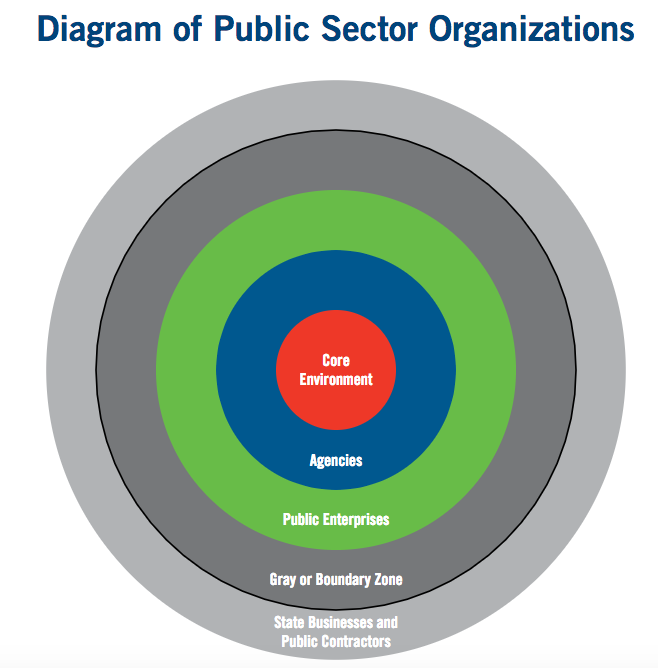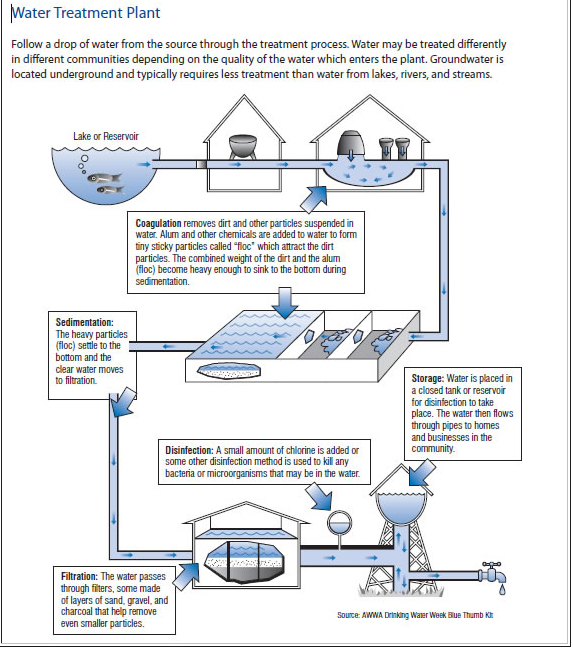To narrow the discussion from last weeks blog, this post will focus specifically on the role of the public sector and associated policies in facilitating safe and clear water for the public.
First one must understand what constitutes the public sector. It is not always clear what organizations should be included under the umbrella of “Public Sector”. Generally speaking the public sector is comprised of publicly funded, non-profit government organizations that provide goods or services to its citizens (IIA, 2011). These organizations or agencies can be
The Institute of Internal Auditors (IIA) provides clarification on this topic here. For simplification, the image below can be used. The colored rings depict public sector. IIA, 2011
IIA, 2011
Public water systems (PWS) are the predominant public sector divisions that influence public water supply. There are approximately 163,000 PWS nation wide (DHS, 2018).
The Arizona Department of Environmental Quality (ADEQ) is a public sector agency in Arizona that exists to protect and enhance both public and environmental health. The ADEQ administers federal programs and state laws to ensure environmental protection. ADEQ oversees greater than 85% of the states’ PWS (ADEQ, 2018). A PWS is defined as a system that has at least 15 hook-ups and serves a minimum of 25 people. These are predominately managed at the city, state, or federal level. Some operate from other political division, such as a district or co-op, and even fewer are managed by private, for profit companies (which would be an exception to the public sector involvement) (ADEQ, 2018). Regardless of who is overseeing the PWS, they all must comply to the federal safe drinking water act (SDWA) set by the Environmental Protection Agency (EPA) to protect public water supply and the Arizona Drinking Rule. In Arizona PWS supply water to over 6 million people. In Phoenix, Maricopa County’s drinking water program regulates local PWS to ensure compliance with SDWA. The ADEQ oversees the county and state facilities located in Maricopa county.
The process of PWS treatment is illustrated below.

Although there is involvement of private and volunteer sectors (which will be discussed in my next post) in public water supply management, the public sector carries the majority of the responsibility.
Another important element of the public sector is the public’s ability to access and participate in policy advocacy. The ADEQ established the Safe Drinking Water Information System (SDWIS) which allows public access to data and information about the regulated PWS. Through SDWIS public concerns can be communicated directly to members of ADEQ, and public notices are posted on the ADEQ website when meetings are held. The ADEQ also provides community outreach and education through workshops and seminars.
References
Arizona Department of Environmental Quality. (2018). Water quality division: Safe drinking water. Retrieved from: http://legacy.azdeq.gov/environ/water/dw/SDW_Public.html
Department of Homeland Security. (2018). Water and waste sector. Retrieved from: https://www.dhs.gov/water-and-wastewater-systems-sector
Environmental Protection Agency. (2018). Safe drinking water act. Retrieved from: https://www.epa.gov/sdwa
Institute of Internal Auditors. (2011). Supplemental guidance: Public sector definition. Retrieved from: https://na.theiia.org/standards-guidance/Public%20Documents/Public%20Sector%20Definition.pdf
Maricopa County. (2018) Water quality. Retrieved from: https://www.maricopa.gov/2353/Water-Quality
